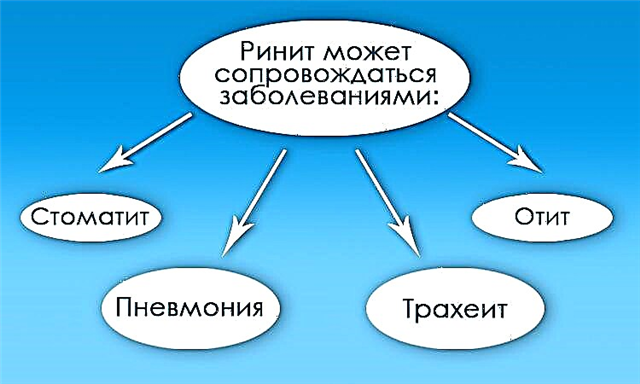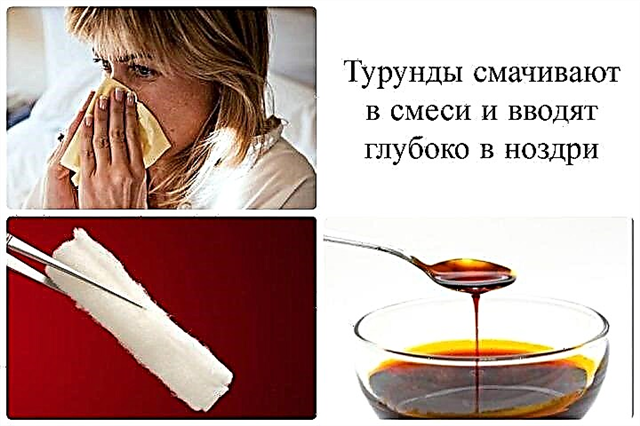 In some cases, drug therapy is not enough, so a puncture of the maxillary sinuses is required. The procedure is performed to remove purulent masses and sanitize the infectious focus.
In some cases, drug therapy is not enough, so a puncture of the maxillary sinuses is required. The procedure is performed to remove purulent masses and sanitize the infectious focus.
The mechanism of development of sinusitis is as follows. Chronic rhinitis, otitis media, or tonsillitis increases the risk of sinus infections. The inflammatory process covers one or both maxillary cavities, as a result of which hypersecretion begins.
Swelling of the mucous membrane of the nasal passages makes it difficult for mucus to drain from the sinuses, which predisposes it to accumulation.
Violation of ventilation leads to the activation of conditionally pathogenic flora, the rapid multiplication of microbes and the accumulation of mucous secretions.
As the disease progresses, purulent masses appear, which is accompanied by a sharp deterioration in the general condition. Treatment of sinusitis in adults depends on the severity of the disease and concomitant pathology.
The symptom complex includes:
- severe nasal congestion;
- nasalness;
- headache;
- thick discharge with a green tint;
- Difficulty nasal breathing;
- heaviness, soreness in the paranasal zone, which increases with bending;
- decreased sense of smell and taste;
- rapid fatigue;
- poor sleep;
- hyperthermia.
When the first signs of pathology appear, it is necessary to select effective drugs for the treatment of sinusitis. Often, the treatment of sinusitis involves the use of several groups of nasal drops:
- vasoconstrictor agents;
- medications that thin mucus;
- antibacterial drugs;
- antiseptics.
First, the sinuses should be cleaned with saline, then a vasoconstrictor should be instilled. When nasal breathing becomes a little freer, antibacterial medicines are instilled.
Nasal drops from sinusitis are both cheap and expensive. What is the reason for the difference in cost? It all depends on the composition and manufacturer. However, it should be remembered that they are only part of a comprehensive therapy. In most cases, systemic antibiotic therapy is required.
Vasoconstrictor drops for sinusitis
Among all nasal agents, it is vasoconstrictor nasal drops for sinusitis that are the most effective. They reduce the diameter of local blood vessels, as a result of which tissue edema, the volume of nasal secretions decrease, and breathing becomes easier.
Medicines of this group are necessary to restore the outflow of purulent mucus from the paranasal sinuses, which ensures their sanitation. Depending on the duration of the therapeutic effect, several types of drops are distinguished.
Short-acting medicines
Effective nasal drops for sinusitis differ in the active substance:
- naphazoline. It is part of such funds as Naphtizin (not expensive), Sanorin. Medicines are prohibited for glaucoma, hypertension, severe atherosclerotic vascular disease, diabetes, hyperfunction of the thyroid gland, during gestation, lactation. From the side reactions, we single out a decrease in temperature, a decrease in heart rate, and arterial hypertension. You should also remember about possible allergies, because Sanorin contains eucalyptus oil. Oil drops sometimes cause a feeling of congestion and dryness of the mucous membrane;
- phenylephrine. Representatives - Vibrocil, Rinza, Adrianol. The first drug is often prescribed for babies from one year old. It additionally contains an antihistamine component. Contraindications include atrophic type of rhinitis. Nazol baby has a powerful vasoconstrictor effect. It is not recommended for thyroid hyperfunction, diabetes. Adverse reactions include dryness, burning sensations, dizziness, nausea;
- tetrizoline (Tizine).
Medium duration drugs
 The group includes drops from sinusitis based on:
The group includes drops from sinusitis based on:
- xylometazoline. The medicine has the most powerful vasoconstrictor properties. The effect is noticeable in a few minutes after its introduction. Negative consequences include irritation of the mucous membrane, sneezing, increased rhinorrhea, temporary loss of smell, as well as rapid addiction, which makes the effect less powerful. Otrivin, Tizin-xylo, Xymelin, Rinonorm, Snoop, Farmazolin are not prescribed for arterial hypertension, heart palpitations, severe atherosclerosis, atrophic form of rhinitis;
- tramazolin. It is part of Rinospray, Adrianol, Lazolnazal plus. Contraindications include thyroid hyperfunction, pheochromocytoma, severe renal insufficiency, glaucoma. With prolonged use, local symptoms of irritation of the nasal mucosa appear.
Only Adrianol can be used in infants, the rest after the age of six.
Long-acting medications
The group is represented by medicines, which include oxymetazoline. These are Nazivin, Nazol, Afrin, Fazin. Depending on the quantitative composition of the active and auxiliary substances, drugs can be produced with different concentrations (0.1%, 0.05%).
You should not drip the drug in case of intolerance to the components, atrophic type of rhinitis. Among the undesirable consequences, we single out temporary dryness, burning sensations in the nasopharynx, sneezing.
Pus thinning agents
What nasal drops help to facilitate the removal of pus? The development of sinusitis is based on the inflammatory process, which provokes increased secretion. One of the directions in the treatment of pathology is to ensure the outflow of mucus by reducing its viscosity.
This property is possessed by drops from sinusitis with a plant or synthetic composition. They increase the production of mucus, thereby reducing the viscosity of the purulent masses and restoring the drainage function. Below are the best medicines. It is better to use them after cleansing the nasal cavities with a saline solution, which increases the therapeutic effect.
A striking representative is Sinuforte, Rinofluimucil (not only liquefies phlegm, but reduces swelling of the mucous membrane, facilitates nasal breathing).
Let's take a closer look at Sinufort. Its components are cyclomena (juice, tubers). After instillation, the medicine increases the volume of mucus, facilitates drainage and clears the cavities from microbes.
When using Sinuforte in parallel with antibacterial nasal drops, the absorption of the latter is accelerated, and the therapeutic effect is enhanced. The plant is considered toxic, but Sinuforte contains a safe dose.
Sinuforte is a mucolytic, anti-inflammatory and vasodilating nasal drops. The drug expands local blood vessels, which makes it possible to improve the delivery of immune components for a quick recovery.
The product can be used for up to two weeks. It is especially effective in chronic sinusitis, as well as otitis media, which develops as a complication of the disease.
A good result is given by the combination of Sinuforte with an antibiotic, for example, Isofra. Restrictions in use apply to babies up to the age of five, the period of gestation, lactation, as well as people with severe pathology of the cardiovascular system and an allergic reaction. One injection into the nose should be done daily, avoiding the interaction of the herbal remedy with vasoconstrictor medications.
This medicine for sinusitis after instillation can cause lacrimation, severe salivation, burning sensations in the nasal passages, shortness of breath, which indicates the development of allergies.
Antimicrobial nasal drops for sinusitis
It is practically impossible to do without antiseptics for sinusitis. To cure the disease, the doctor may prescribe Isofra, Polydex or Bioparox.
Isofra
The medicine is allowed in infancy, as well as during gestation (in the second trimester). The doctor may also recommend Isofra during lactation, since the drug does not enter the systemic circulation.
The composition includes an antibiotic, due to which it is possible to cleanse the paranasal cavities from microbes. It is not prescribed for allergic rhinitis due to its absolute ineffectiveness.
Restrictions apply to:
- newborns up to one month of age;
- people who cannot tolerate framycetin.
Among the undesirable consequences, it is worth highlighting a change in the composition of the microflora of the nasopharynx.
Polydexa
Unlike Isofra, Polydexa has a multicomponent composition. Compound nasal drops have two antibiotics, a vasoconstrictor, and a hormonal substance.
In this regard, complex drops for sinusitis are not prescribed until the age of three, during pregnancy, severe renal dysfunction, lactation, viral diseases, glaucoma.
Polydexa has a powerful anti-inflammatory, antihistamine, antibacterial and vasoconstrictor effect.
Incorrect treatment tactics can lead to chronicity of the disease and the development of serious complications.
Antiseptics
Antiseptic drugs can clear the nasal passages of pathogenic pathogens. Among them, it is worth highlighting Furacilin, Miramistin, Protargol. These funds are not addictive, so they can be used for a long period.
Collargol contains silver proteinate, which has antiseptic properties. In order for the active substance to be in an active state, albumin is also included in Collargol.
The medication belongs to the group of anti-inflammatory, antimicrobial and astringent agents. Application restrictions concern:
- intolerance to silver, albumin (an absolute contraindication);
- period of gestation, lactation (relative);
- babies (relative).
Traditional methods
Separately, it should be said about the folk methods that can be used for sinusitis. A proven and effective way to combat the disease is a remedy based on aloe juice.
To prepare it, it is enough to peel the leaf, squeeze out the juice and dilute it with boiled water to obtain a 50% concentration. Dripping two drops twice.
How to properly instill nasal drops? To get the maximum healing effect, you must follow some rules:
- the solution should be at room temperature;
- you should not bury the nose in a supine position;
- first, you need to tilt your head back and to the right a little.
Now you can instill the left nasal passage; in this position, you need to hold your head for 10 seconds. Now you can instill your nose on your own, but remember that only a doctor can choose the most effective drug. Thanks to the examination, he will accurately establish the type of pathogenic pathogens and prescribe an antibiotic that is effective for this case.



